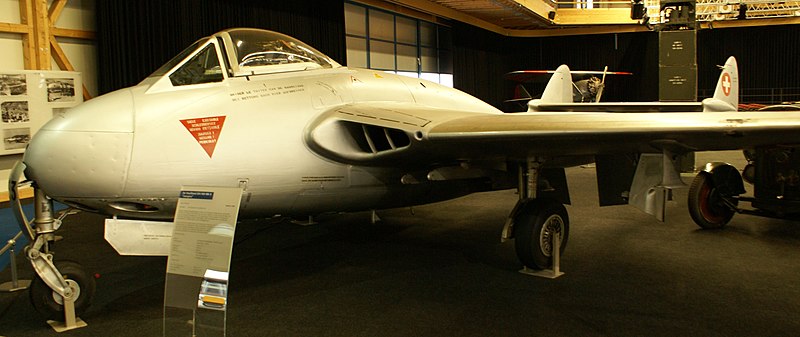n the 1952-53 period, rumours had it
that Gloster Aircraft, manufacturers
of the Meteor twin-engined fighter
were pushing their aircraft for the Indian
Air Force which Service had wanted to
diversify its source of combat aircraft
and had preferred the Dassault Ouragan
from France. In any case, Gp. Capt. H
Moolgavkar, regarded as an authority on
that jet fighter, had flown the Meteor Mk
IV extensively during his Day Fighter
Leader's Course with the RAF at West
Raynham and had pronounced that type
as "not suitable for Indian conditions".
And so, the Dassault Ouragan was ordered
by the Government and the IAF chose to
ferry the French fighters themselves back
to India.
Displaying little disguised sceptism,
Air Marshal Sir Gerald Gibbs the then IAF
Chief, opined that the Ouragans "would
never reach" and would be "abandoned
enroute". Air Vice Marshal S Mukherjee,
then Deputy Chief and Air Commodore
AM Engineer were determined to prove
this otherwise.
As Director Operations, Group
Captain H Moolgavkar was chosen to
lead the team for the ferry, the others
Ouragans to India
A fragment of IAF History
The first batch of Dassault Ouragans (Toofanis) at Palam, November 1953 .
Leading the ferry flight of Ouragans from France to India was then Gp. Capt. Arvind Moolgavkar,
seen here at Almaza airport enroute to India.
The other ferry pilots included PVS Ram, Suranjan Das and Roshan Lal Suri,
seen here with Wg. Cdr. Arvind Moolgavkar at Almaza.147
V/2010
being Squadron Leaders Suranjan Das,
PVS Ram and Roshan Suri. He requested
that a Devon light transport from the IAF
Communication Squadron be provided to
fly them all along the route to France.
Thus, on 20 August 1953, Devon
(HW519) with the ferry pilots on board
took off from Palam leading west, via
Mauripur in Pakistan, to Sharjah in the
Persian Gulf, thence to Bahrain, Baghdad,
Nicosia, El Edem in Libya, Idris, El Mas
in Sardinia, thereafter to Nice in southern
France and then Villa Coublay to Mont
de Marson arriving on 27 August. Here,
the intrepid pilots began their conversion
course on the Ouragan fighter-bomber the
very next day, 28 August 1953, completed
within six weeks.
On 18 October 1953, Gp. Capt. H
Moolgavkar (in 1C 558) led the formation
of 4 Ouragans to India, transitting the
same stations earlier taken by the Devon
and arrived back at Palam exactly on
schedule without any unserviceability, on24 October 1953.
Courtesy:-
http://www.vayuaerospace.in/images1/History_Ouragons.pdf






